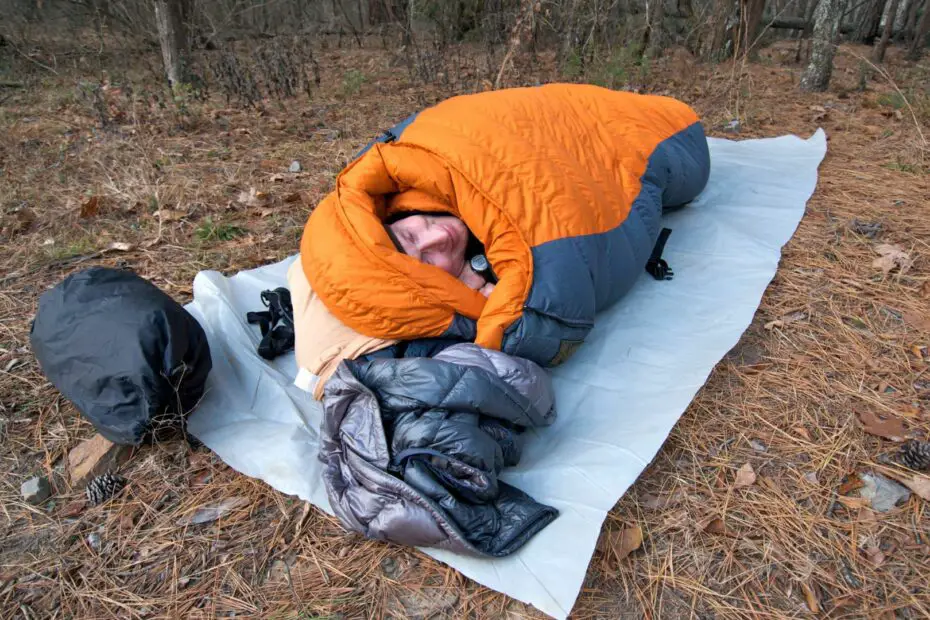Your sleeping bags size and fit are two of the most important aspects in determining the performance of the bag. It’s right behind the temperature rating for determining the warmth of your bag. An oversized bag will let in drafts while allowing heat to escape, and undersized bags compress the insulation. There’s a fine line between a perfect sleeping bag fit and one that compromises warmth. So, how do you fit a sleeping bag and what size sleeping bag should you choose?
Look at the sleeping bags “Fit To Length” and choose a bag that’s one size longer than your height. Sleeping bags are sized in 5’6″, 6’0″, and 6’6″ lengths. Go with whichever size is closest to your height without going over. You also need to take hip girth, shoulder girth, and the bags gender into consideration as well (I go over this below).
Table Of Contents
What size sleeping bag do I need?
Your sleeping bags fit and size are one of the most important aspects in determining body heat loss. A bag that’s too large will let body heat escape (may also let in drafts), and small bags constrict the insulation. So, how do you size a sleeping bag?
The size of the sleeping bag is determined by your body size and how cold the nighttime temperatures are. As a general rule, you should choose a sleeping bag that’s sized one step above your height. Sleeping bags generally come in 3 sizes: small (5ft. 6in) regular (6ft) and long (6ft 6in)
So if you’re 5’10”, choose a sleeping bag that’s rated for a 6ft tall person. You will have a little bit of extra space at the top of your bag, but it won’t be a big deal. Sleeping bags are designed with 6-8 inches of extra space in the hood so you can stretch out. So a few extra inches at the top of the bag won’t be a big deal.
The only time it makes sense to size down your bag is if you’re camping in subzero temperatures or trying to reduce pack weight. Reducing the overall space inside your bag will help with temperature regulation and shorter bags will be a few oz lighter. You don’t want to compress the insulation with an undersized bag, but sizing down 1-2 inches shouldn’t cause problems.
Mens vs Womens Sleeping Bags
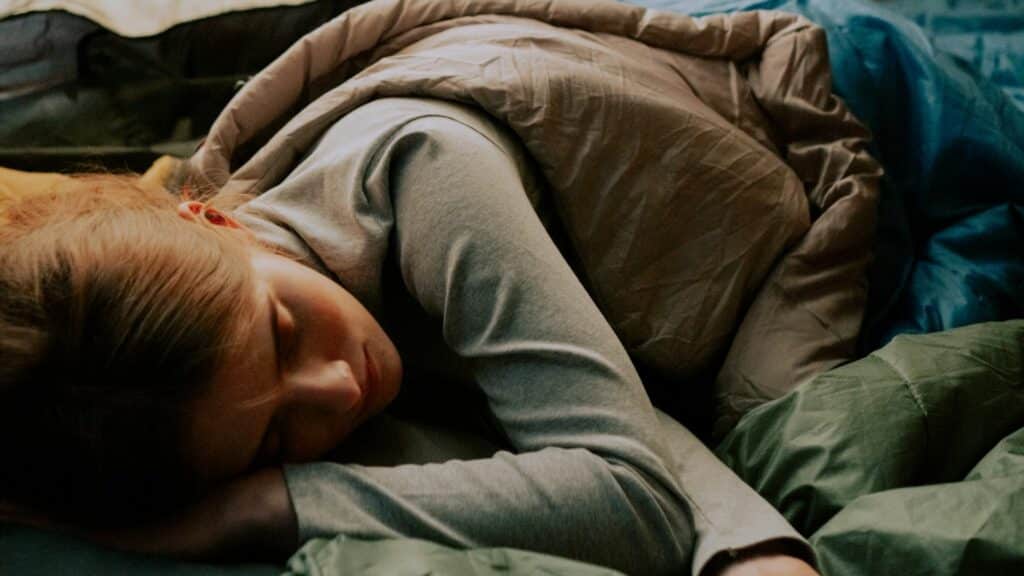
Women and men are shaped differently, so women’s sleeping bags reflect this. The build of a women’s sleeping bag will be wider in the hips and narrower through the shoulders.
This gives women more freedom of movement in their hips and brings in the shoulders to help prevent body heat loss. It’s easier to conserve body heat in a properly dimensioned bag without all that extra space.
Women’s sleeping bags may also be available in shorter lengths. Most mens bags have a minimum length of 6ft which is far too long for most women. A women’s bag comes in a smaller 5’6″ length, and mens bags come in longer 6ft and 6’6″ lengths. Taller women can use longer mens sleeping bags, but there will be more interior space resulting in reduced thermal efficiency.
There will also be a slight difference in insulation, with womens bags having more insulation in the torso and footbox. This is based on studes where women lose heat at a faster rate than men, so they need a few extra oz of insulation.
Three Key Sleeping Bag Size Measurements To Consider
When it comes to fitting a sleeping bag, there are three important size measurements to consider: length, shoulder girth, and hip girth. Sleeping bag length is the most important, but shoulder and hip girth also play an important role when sizing a sleeping bag.
Sleeping Bag Length
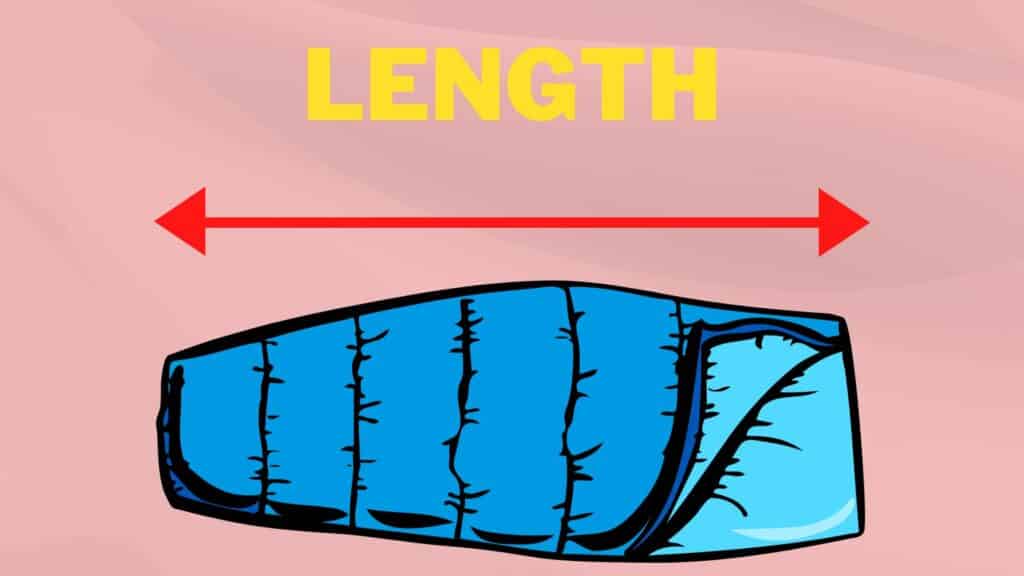
Sleeping bags are sized by their length. This should seem obvious, but the correct length sleeping bag will directly correlate with your height. You will want to get a bag that is at least as long as your body. For example, if you are 6 feet tall then you would need a sleeping bag that’s at least 6 feet long.
However, this can be a little bit misleading, since a sleeping bag that’s sized to fit a 6ft person will be at least 8 inches longer than the “Fits Up To Length”. Why do you need extra room in a sleeping bag? When we lay down flat, our spine extends, feet fall forward, and we spread out larger than our standing size.
Sleeping bag manufacturers solve this issue by adding a few extra inches to the length and width of the sleeping bag. The goal is to choose the smallest sleeping bag you can find that’s still comfortable inside. Reducing the surface area inside your bag will help trap body heat, while reducing trail weight.
Most sleeping bags come in three standards sizes for various heights: small (5ft. 6in) regular (6ft) and long (6ft 6in). Don’t worry if you fall outside these standardized sizes. A few inches taller or shorter won’t be a big deal.
Shoulder Girth
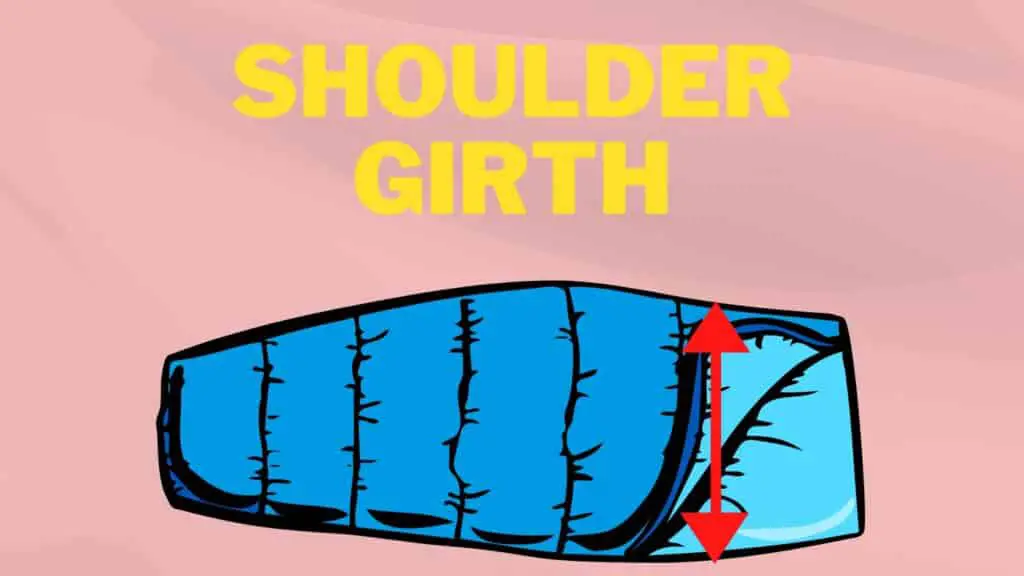
Shoulder girth is the circumference of the sleeping bag across your shoulders. Most mens sleeping bags have a shoulder girth ranging from 60-64 inches. It might not seem like a big deal, but 4 inches can make a huge difference in the roominess of your bag.
Most regularly sized men will feel confined in a 60″ shoulder girth bag. A 64″ shoulder girth bag will feel far more spacious. Women’s sleeping bags tend to be narrower in the shoulders (56″-60″).
The easiest way to determine what’s comfortable is to try out a few bags. I recommend going with a roomier bag unless you’re trying to get into a lightweight or ultralight setup. Reducing shoulder/hip girth sizes will take a few oz off the overall trail weight of your sleeping bag.
Sleeping Bag Hip Girth
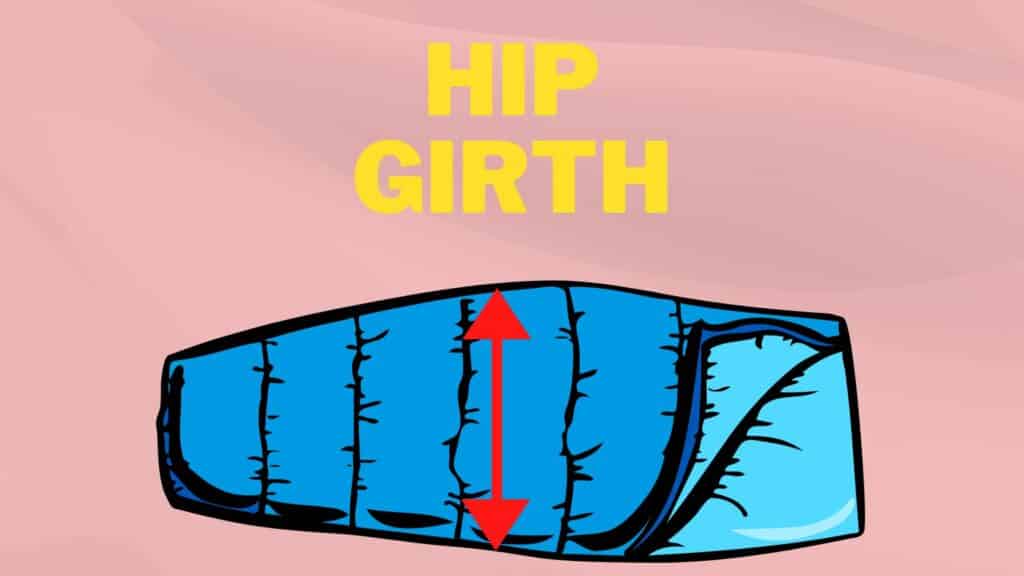
Hip girth measures the circumference of the sleeping bag across your hips. The biggest difference in hip girth will be between men and womens bags. Mens bags tend to have 58″ hip girth and women’s sleeping bags are a little bit wider at 60″. This isn’t that important since most bags have standardized hip girth circumferences.
Don’t Forget About The Hood
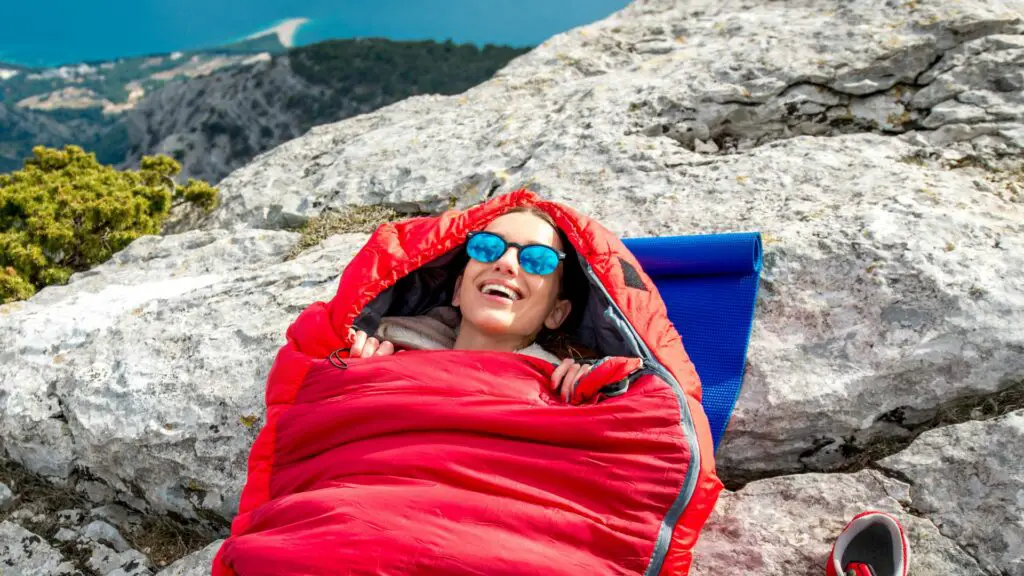
Another key factor you need to consider when sizing a sleeping bag is the size of the hood. The hood plays a crucial role in your warmth and comfort on a cold night. A bigger hood will feel more spacious, but smaller hoods are better at preserving body heat.
A sleeping bags hood should wrap comfortably around your head without feeling constricting. The hood needs to feel secure around your head to prevent a cold breeze from entering your bag. It also needs to be comfortable enough for movement, so try to move your head around from left to right.
Sleeping Bag Shape
Shape will also play an important role when sizing a sleeping bag. Let’s discuss the four most common sleeping bag shapes. Hint: most people should choose a mummy sleeping bag.
Mummy Sleeping Bags
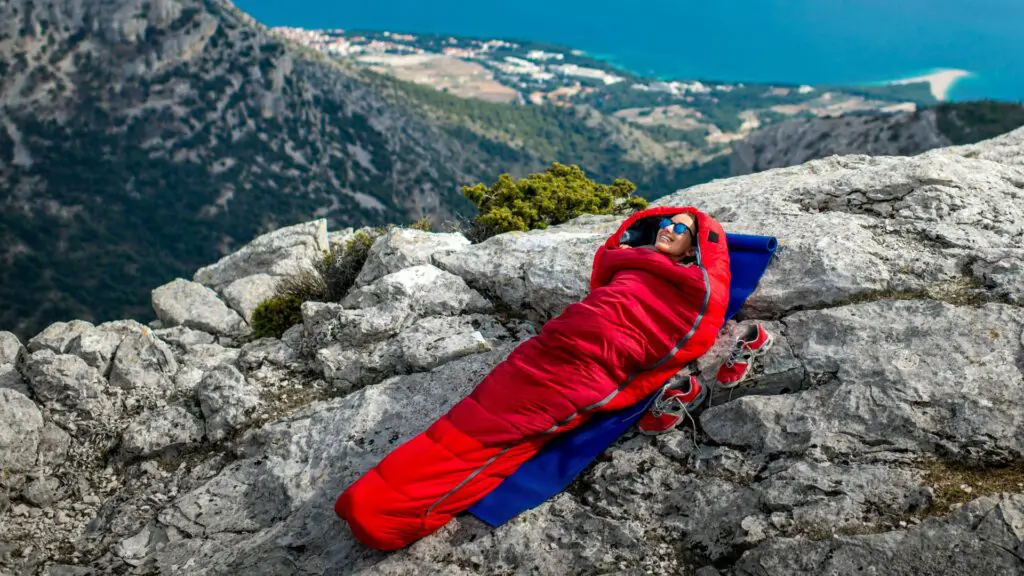
Mummy sleeping bags are by far the best design. They wrap around your body to trap body heat, they’re lightweight, and easily packable. This type of sleeping bag will taper down from your shoulders down to your feet to reduce trail weight and dead space in the bag (increases warmth).
Rectangular Sleeping Bags
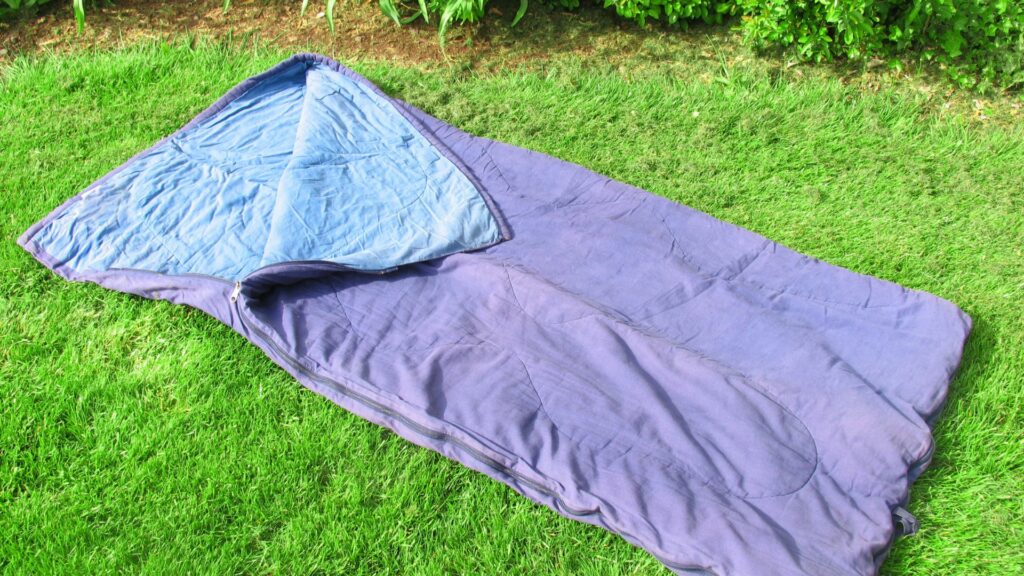
Rectangular sleeping bags are usually found in children’s sleeping bags and budget bags. These bags use a rectangular design so there’s lots of room to move around, but they’re terrible at trapping body heat in cold weather. They’re also larger and heavier than other options making them a poor choice for backpacking.
Tapered Sleeping Bags (aka Semi-Rectangular)
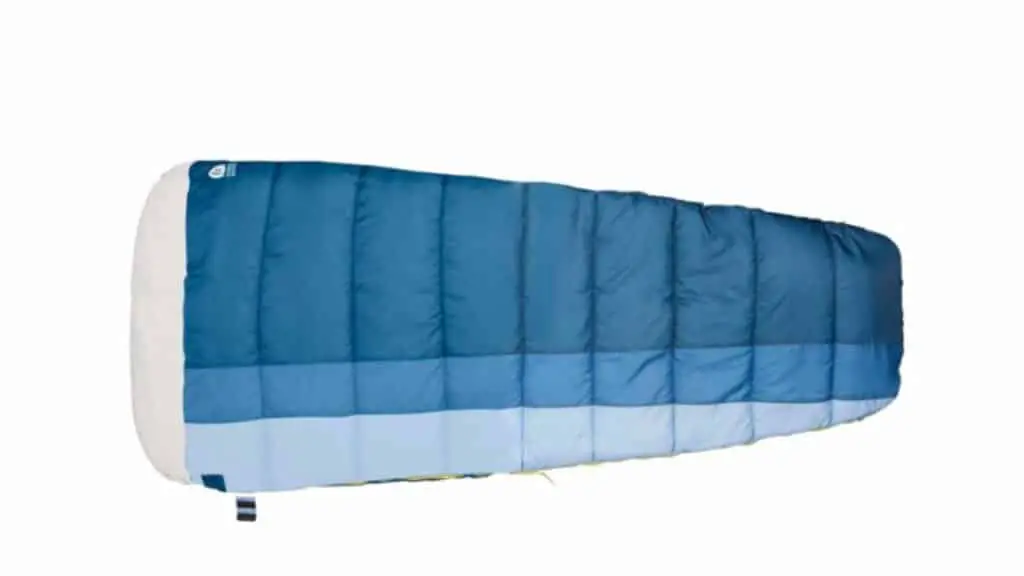
This is a hybrid between a mummy and rectangular bag. It’s spacious throughout the bag like a rectangular bag, but there’s a hood so you can trap body heat in moderately cold temperatures. The saying “Jack of all trades master of none” applies perfectly to a tapered sleeping bag.
Double Sleeping Bags
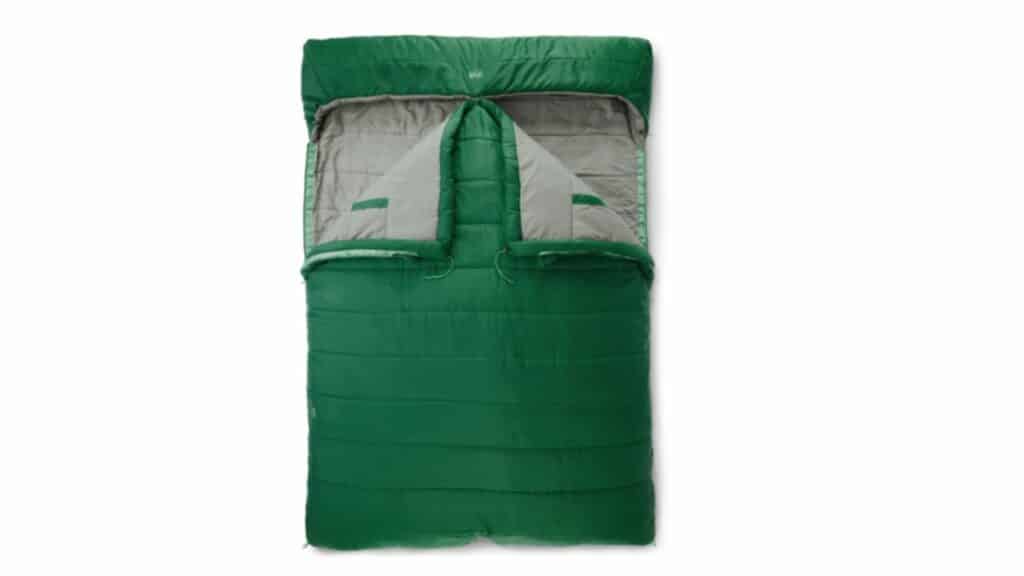
As the name implies, double sleeping bags are designed for two people to use together. If you like to snuggle with your partner at night a double sleeping bag is a great choice. Most double sleeping bags are about the size of a full-sized bed so figure out if that will be big enough for you.
